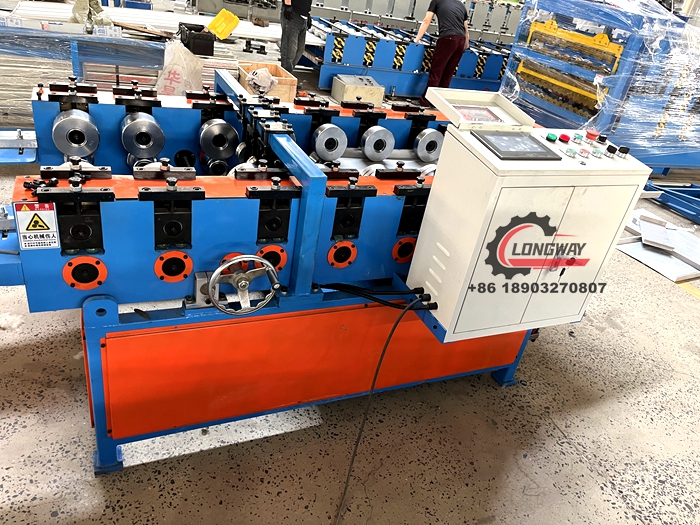furring channel roll forming machine material
Understanding the Material Used in Furring Channel Roll Forming Machines
Furring channels are essential components in the construction and building industry, providing a vital framework for drywall installations, ceilings, and other structural setups. The roll forming machine used to create furring channels plays a crucial role in ensuring that these components are produced efficiently and with high accuracy. One of the primary considerations in this process is the material used for the furring channels, which directly influences the performance and quality of the end product.
Material Selection for Furring Channels
The most common materials employed in the roll forming of furring channels are steel and aluminum, each offering distinct advantages depending on the application's requirements.
1. Steel Steel is arguably the most widely used material for furring channels due to its strength, durability, and availability. Cold-formed steel is particularly popular because it can be manufactured in various thicknesses while still maintaining a lightweight profile. The process of cold forming does not require initial heating, allowing the metal to retain its structural integrity and resistance to deformation.
Additionally, galvanized steel provides an extra layer of protection against rust and corrosion, ensuring that the furring channels maintain their structural integrity over time, especially in humid or high-moisture environments. The use of galvanized steel is essential in commercial projects where longevity and durability are critical factors.
2. Aluminum While less common than steel, aluminum furring channels are increasingly utilized in specific applications. Aluminum is lightweight, making it easier to handle and transport, particularly in large-scale projects. This material offers excellent corrosion resistance, which is beneficial for installations in challenging environments, such as coastal areas or regions with high humidity.
Despite being more expensive than steel, aluminum's weight advantage can lead to lower transportation and labor costs, making it an appealing option for specific building applications. Additionally, aluminum can be anodized or coated to enhance its aesthetic appeal and further improve its resistance to environmental factors.
furring channel roll forming machine material

The Roll Forming Process
The roll forming process itself is a continuous operation that transforms flat sheets of material into the desired furring channel profiles through a series of rollers. The material is fed into the machine, which shapes it incrementally by passing it through a sequence of rolls. This method not only ensures consistent product quality but also allows for high-speed production, which is essential for meeting the demands of modern construction projects.
The adaptability of roll forming machines means they can accommodate various material thicknesses, widths, and profiles, making them versatile tools for fabricators. Operators can easily adjust the machinery to produce custom profiles to meet specific project requirements.
Importance of Quality Control
Quality control is a vital aspect of the furring channel production process. The choice of material must not only focus on cost-effectiveness but also on strength and compliance with building codes and standards. Regular testing and inspections are paramount to ensuring that the channels meet the required specifications for load-bearing capacities and structural integrity.
Advancements in technology also enable manufacturers to employ sophisticated monitoring systems during the roll forming process, ensuring that any deviation from quality standards can be quickly identified and corrected.
Conclusion
The selection of materials for furring channel roll forming machines is critical to producing high-quality structural components. Both steel and aluminum offer unique benefits that cater to different project needs, making understanding their properties essential for manufacturers and builders alike. By utilizing advanced roll forming technology and adhering to stringent quality control measures, the construction industry can continue to deliver reliable and durable furring channels that meet the demands of modern building projects.
-
Roof Panel Machines: Buying Guide, Types, and PricingNewsJul.04, 2025
-
Purlin Machines: Types, Features, and Pricing GuideNewsJul.04, 2025
-
Metal Embossing Machines: Types, Applications, and Buying GuideNewsJul.04, 2025
-
Gutter Machines: Features, Types, and Cost BreakdownNewsJul.04, 2025
-
Cut to Length Line: Overview, Equipment, and Buying GuideNewsJul.04, 2025
-
Auto Stacker: Features, Applications, and Cost BreakdownNewsJul.04, 2025
-
Top Drywall Profile Machine Models for SaleNewsJun.05, 2025








